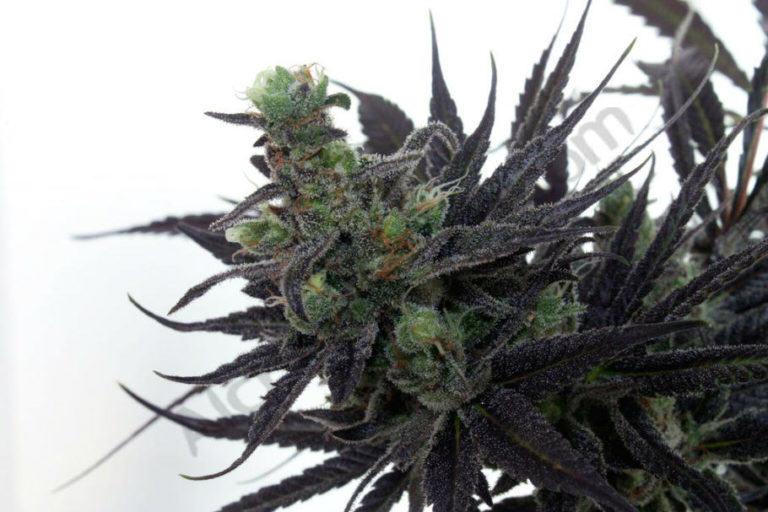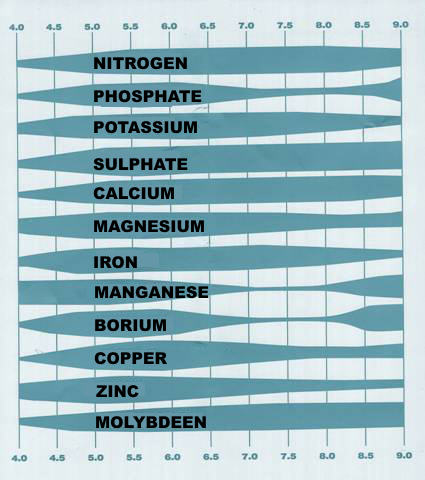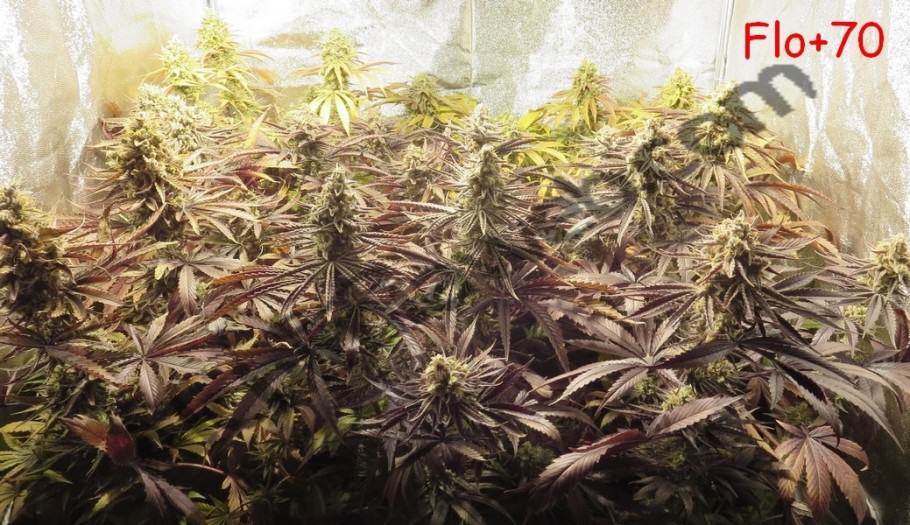The colours of cannabis
List of contents
Pakistan Chitral Kush, Grape Ape, Grandaddy Purple, Serious Six, Peyote Purple, Panama Red...all of these cannabis strains show a wonderful colour palette which goes from reddish to purple. Indeed, and while the most common colour in cannabis is green, both leaves and buds may turn orange, pink, purple, black, red, blue...These awesome colours are often one of the traits that breeders want to fix, since it is also one of the most demanded traits by users. 93% of cannabis smokers have noted that they've been influenced by the colour of the strain sometime. But, how does cannabis develop such beautiful shades?
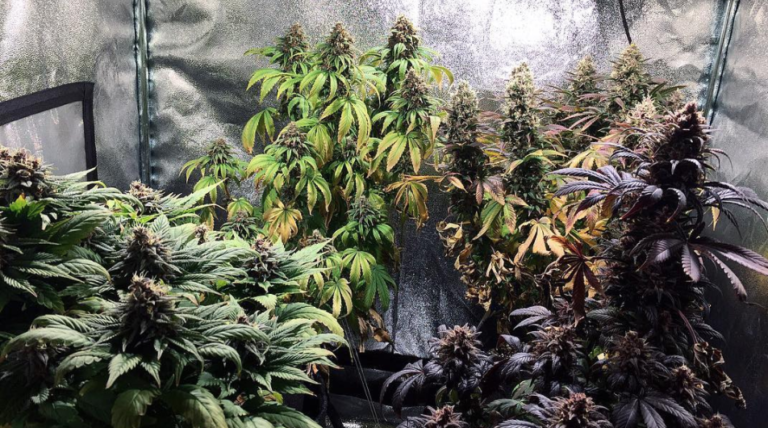
Natural pigments
When we think about plants, the first colour that comes to mind is green. Indeed, the world of plants id dominated by the green colour, but if we take a closer look we'll soon realize that plants can also develop many other colours, which is explained by pigments. Pigments are chemical colorants, either from living organisms or synthetic. In cannabis plants, they're are normally divided into several categories:
Chlorophyll
Chlorophyll is quite abundant in plant cells, representing around 70% of the pigments contained in one plant. It is responsible for the green colour and essential for the plants life, since it allows them to absorb the necessary light to perform photosynthesis (a process for which plants synthesize organic matter from inorganic matter by using the energy of light, ensuring the soil food web). Chlorophyll tends to mask other plant pigments, that's why most plants look green.
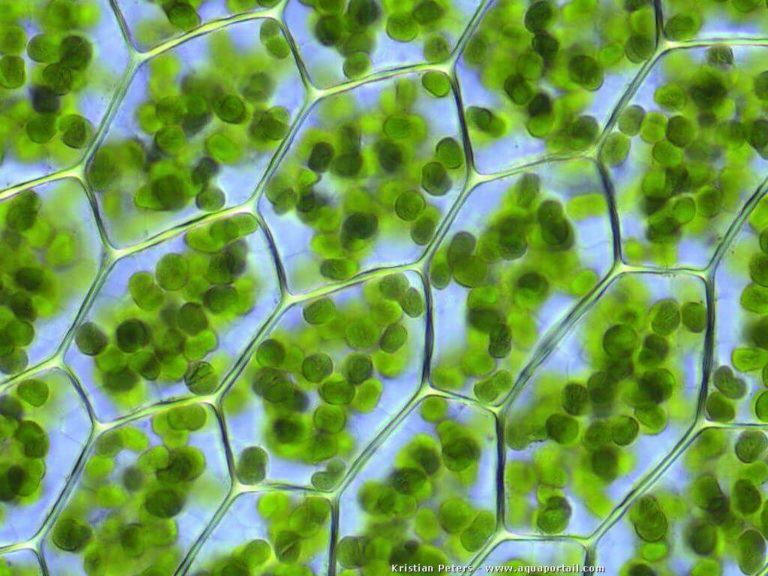
Carotenoids
These compounds are responsible for the red, orange and yellow colours in plants, but they're also present in many other living organisms. Indeed, carotenoids play an assential role for humans, since they're involved in the production of vitamin A, which is in turn related to vision and human growth. Carotenoids are synthesized by all green plants, but they're often masked by chlorophyll. During autumn, when chlorophyll degrades, carotenoids often show their beautiful range of colours.
Flavonoids
Flavonoids are the main responsibles for the colour of the flowers. They can be found in all aerial parts of the plant and play a major role in plant coloration. Flavonoids are also essential for photosynthesis, since they block UV rays which destroy proteins. They are also important to either attract pollinating insects or repel pests, acting - as happens with some terpenes - as true natural insecticides.
Anthocyanins
They're actually a subclass of flavonoids and also responsible for a wide range of colours, from yellow-orange (when combined with carotenoids) to blue, red or the beautiful lilac colour of most Purple genetics, which may also depend on pH levels. Anthocyanins are also present in some vegetables like beet, and have antioxidant, analgesic and anti-inflammatory properties.
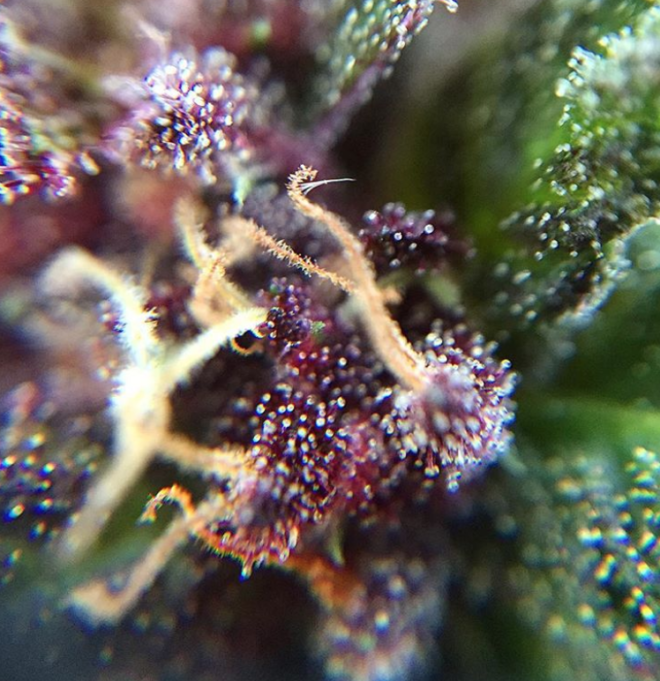
Many other pigments can be found in plants (flavonols, phycobilins, flavanones, leucoanthocyanidins, flavones, etc), but it'd take too long to mention them all here. Transformation of colour in plants comes from a simple chemical process:
Photosynthesis
In short, and as we already saw in our article about Fresh Chilled Hash, chlorophyll pigments are found in chloroplasts, small organelles that play an essential role in the normal function of plant cells. Chloroplasts capture light and - thanks to chlorophyll - transfer the energy of light and transform it into chemical energy. Its absorption spectrum is responsible for the green colour, the main colour in plants. Let's remind now our high school classes: the less absorbed wavelength (in this case, green) is the one perceived by the human eye.
What we must remember here is that chlorophyll is essential for plant life and is closely related to light, and therefore, to photoperiod (that is to say, the length of the daily day/night periods).
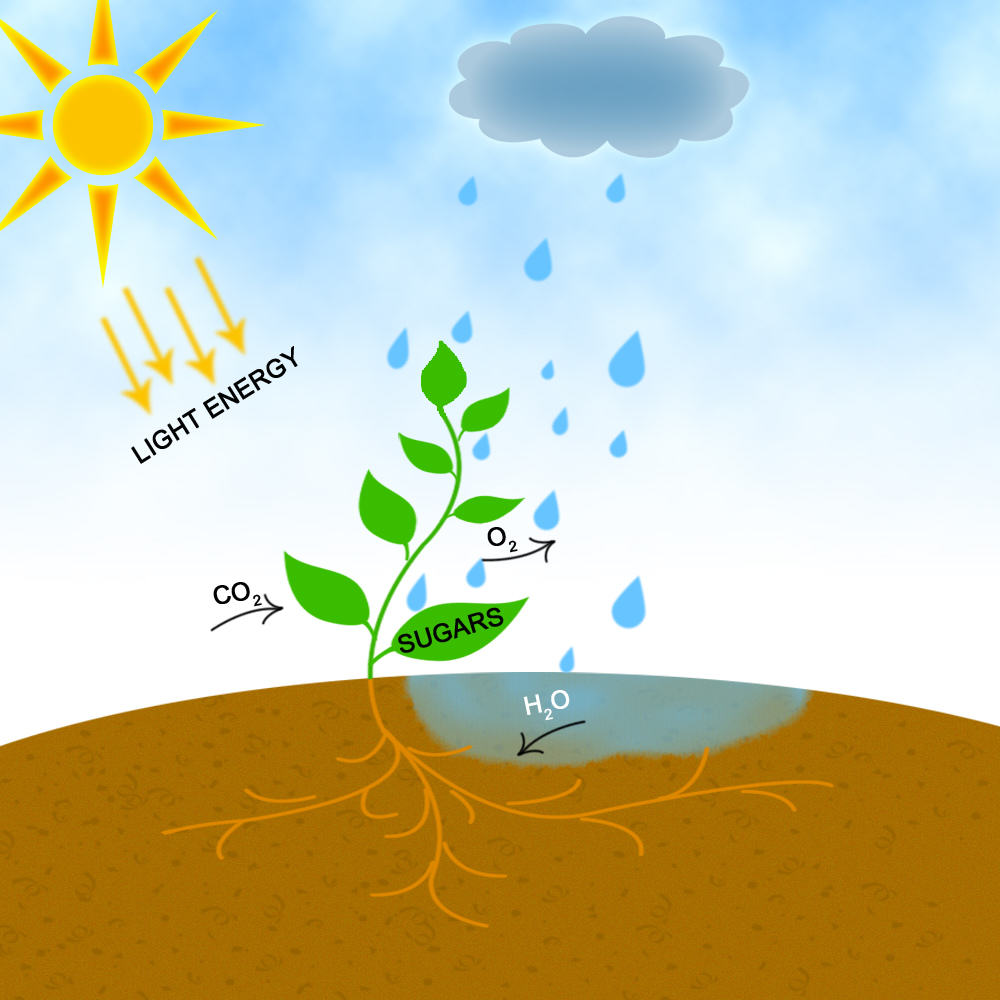
Colour change in cannabis caused by environmental factors
Temperature and growth stage
You surely have noticed the intense green colour of plants during the growth stage. However, many other colours may appear during the flowering of cannabis plants; this means that photoperiod also plays a role in the colouring of plants. Indeed, decreasing the number of light hours will cause a change in the colour of the leaves in many species, which will become more intense as the flowering continues, a process usually called senescence. This process of biological maturation leads to stopping the production of chlorophyll and use all resources for the ripening of the flowers, causing many leaves to wither and die.
Something similar happens with cold temperatures and cannabis cultivation, which can also lead to an inhibition of chlorophyll production. Since it has the capacity of masking other pigments, its absence causes the appearance of secondary pigments, mainly anthocyanins. That's why some plants turn purple or dark blue at the end of the flowering stage, because anthocyanins are accumulating. On the other hand, and if the concentration of anthocyanins is low, carotenoids will appear and plants will develop beautiful orange-yellow shades.
Nutrients and pH
Besides temperature and photoperiod, the colouring of plants also depend on nutrient and pH levels in the growing medium. Normally, acid pH favours the appearance of red colours, neutral pH favours purple colours and alkaline pH boosts blue colours. With regard to nutrients, lower amounts of phosphorous favour red colours, but keep in mind that you don't want your plants to have any nutrient deficiency!
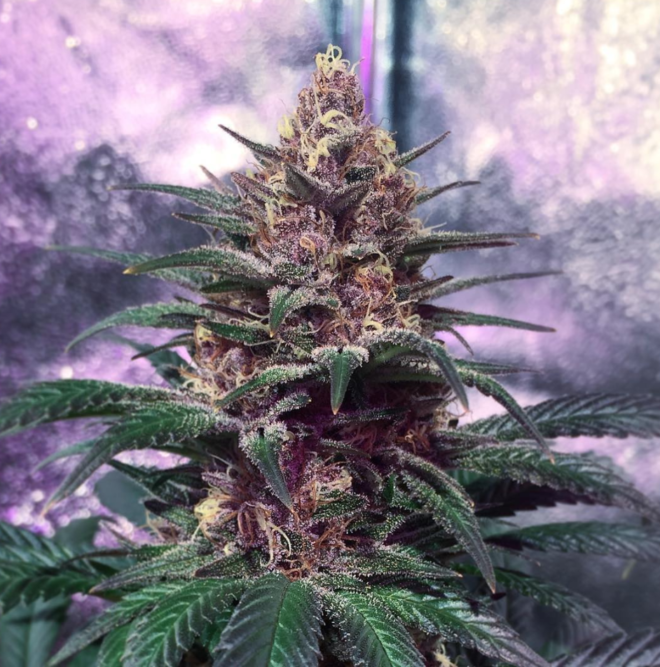
Colour change in cannabis caused by genetics
Each cannabis strain has its own characteristics, which are determined by the plant's genome, its own set of genes and chromosomes. Genome is transmitted through DNA and comes from the parents of the plant, thus being its genetic heritage. There are thousands of different possible combinations which result in an astounding amount of traits, which can be found in the wide range of cannabis strains available. That's why some strains are more likely to develop and show secondary pigments than others, they have some type of genetic predisposition that makes them turn into the awesome colours we often observe in cannabis plants.
That is the case of the socalled "Blue" and "Purple" genetics, which tend to produce higher amounts of anthocyanins. However, this doesn't mean that the plant will necessarily turn purple; as we've seen, environmental factors also play their role here. This names must not be confused with those of other families such as the "Orange" - which refers to either the colour of the hairs or the scent - or the "White family" - which refers to the high amount of trichomes produced by the plant.
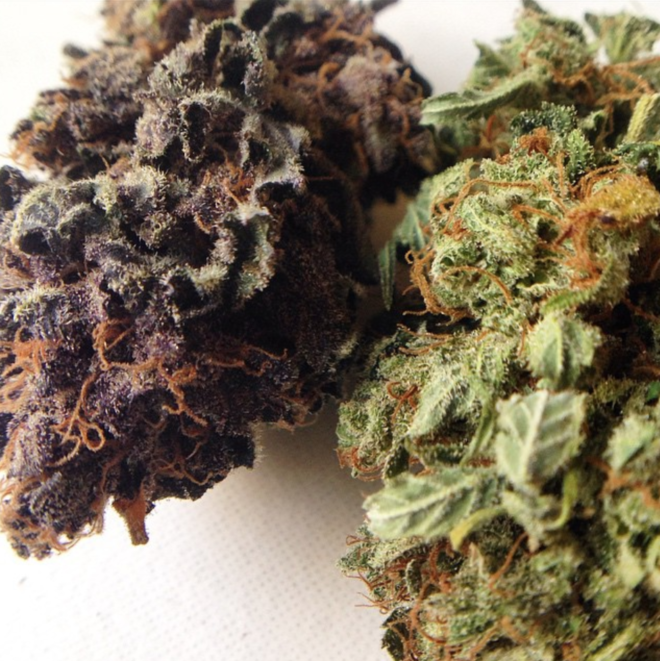
We have explained how different aspects are involved in the colour of plants, from genetic heritage to environmental factors like pH levels, temperature and humidity or nutrients. In this way, and if you want to enjoy a colourful cannabis garden at home, you now know how to promote the appearance of secondary pigments and which strains you should grow to find them.
Happy growing!































































